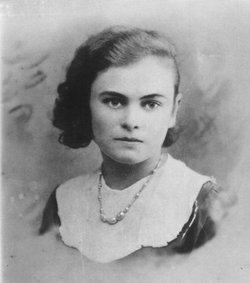Sara was born into a family which would eventually total 11 children. She excelled in school and was offered a scholarship to attend a gymnasium at 13. Defying her father, she accepted the scholarship and moved to Bucharest. However, she was expelled after throwing a inkwell at one of the priests at the school.
With her blond hair and blue eyes, Sara could pass as a Gentile. Determined to make it on her own, she secured an apprenticeship with a dressmaker, sewing high end fashions for Bucharest's nobility. It was in Bucharest that she not only learned sewing skills, but also street smarts, two talents that would serve her well later on.
At the outbreak of the Second World War, Sara was thrown into a Hungarian labour camp with her sister ESther and two friends. No longer addressed by their names, the young women were given numbers. It was there that Sara endured S.S. beatings, frostbite and starvation. By 1944, Sara was transferred to Ravensbruck, where 19 out of 20 women died. However, Sara survived due to her feisty personality, intelligence and street smarts.
After the camp's liberation in the spring of 1945, Sara married a fellow Holocaust survivor. The couple moved first to Canada and later to the United States.
Note: For more information, read Sara Tuvel Bernstein's book The Seamstress: A Memoir of Survival.

No comments:
Post a Comment